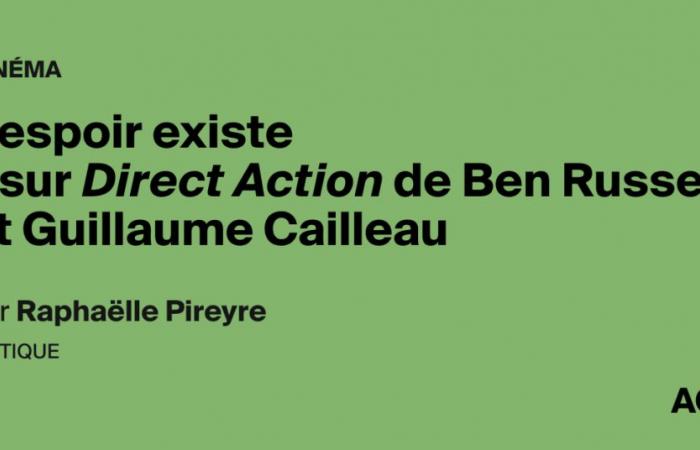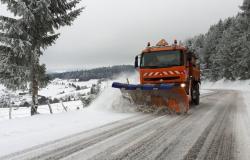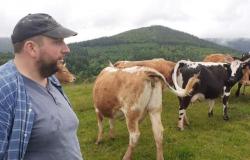There is hope – on Direct Action by Ben Russell and Guillaume Cailleau
By Raphaëlle Pireyre
While the Council of State has validated the activity of the Déméter intelligence unit, responsible for monitoring ecological associations, the immersive feature film by Ben Russell and Guillaume Cailleau plunges into the daily life of the ZAD of Notre-Dame-des -Landes, released in theaters. An ode to political struggle, the film deploys its plans homemade like pages of a manual, turned slowly, to learn to live differently.
So what comes out on the screens Direct Actionan immersive film in the ZAD of Notre-Dame-des-Landes, the Council of State has just validated the creation and missions of the Déméter Cell created in 2019 by Christophe Castaner to “fight against attacks on the agricultural world » but which is above all perceived as a worrying project of invasive surveillance of environmental associations.
The concomitance of these two events of different scales could summarize the structure of the film signed jointly by the filmmakers and artists Ben Russell and Guillaume Cailleau, but conceived much more collectively with the inhabitants of the ZAD. Their first joint production allows daily life in Notre-Dame-des-Landes to sail at its throbbing pace between 2022 and 2023 for nearly three hours, before this tranquility is interrupted by the sound and fury of the violent repression of demonstrations. of Sainte-Soline in April 2023. The field on which the environmental activists advance initially has the air of a fair, the demonstrators carrying a gigantic wooden gantry adorned with decorations. Then, the wide, fixed shot fills with tear gas, masking the invisible adversary.
“That’s not what we need to film,” an activist shouts to the filmmakers when she runs past their camera. Indeed, we have already seen these images of confrontation in excess on a loop on the news channels. They have even recently reached the rank of epic in An area to defend (2023), Romain Cogitore located in a place of occupation similar to that of Notre-Dame-des-Landes the romance between an undercover police officer (François Civil) to dismantle far-left networks and a Zadist (Lina Khoudry), playing with all possible clichés and making confrontation and anger the fuels of an agreed-upon fiction.
An elective community
In Direct Action, the sudden onset of violence frames a portion of independent life full of tranquility. In the first sequence, a resident shows the filmmakers images of the destruction of a cabin with construction equipment which devours and chews the structure. The violence seems all the more incongruous, placed at these extremities, as it perfectly contradicts the logic of what we have seen of the daily life of the utopian community. Its unexpected appearance makes it madness, an aberration.
If the film opens on a computer screen which reveals the video of a confrontation taking place at the ZAD with the police before the Grand Ouest airport project was abandoned by Édouard Philippe in 2018, it is to assume that this direct action cinematographic project will be a counter-image. It was necessary for the two filmmakers to show their credentials to gain the trust of the inhabitants, wary of the appearance given to them and the discourse that this could cause. The computer desktop displays thumbnails, so many tidy videos that open to reveal the past of the ZAD, the archeology of its construction. Direct Action is structured like this screen: each scene will be one of these files, a window which opens onto life at the ZAD, and which, assembled by editing, end up drawing a pattern in the carpet, that of a elective community.
Back to the primitive
In the genius of the Lumière brothers in the invention of their cinematograph, there was the immediate intuition that the quality of the animated view depended on the operator knowing how to place himself in the right place and trigger his crank at the right time. One of their films, made in the late 1890s, first features a wall facing the lens. During the fifty seconds that the film strip lasted, pieces of the building flew, revealing in the depth of field the workers who exploded it with sledgehammers.
An identical plan appears in Direct action : behind the wall, a few young men and women tear down a partition, their satisfied faces appear at the cost of their physical efforts. In this plan there are a multitude of signs of what this community is: not only destroying what exists, but doing it yourself, with your own hands, and collectively. The duration is no longer limited here like that of Light views by the restricted size of the strip of film. Cailleau and Russell leave to each shot the real temporality of its action, to the point of being hypnotic. The sequence shot becomes their filming ethic, the one that allows them to ask themselves each time before shooting whether it is here and now that they should shoot. They also return to the simplicity of a primitive form, thus adapting the form to their object of study.
This collection of long shots, most often still, documents the gestures of a return to an autonomous life in its means of production. We see the cutting of wood, into planks or logs, or a young woman who carefully sharpens the blade of a chainsaw, proceeding methodically, from one tooth to the other of the chain. The pleasure of rediscovering the meaning of the manual gesture is matched only by that of taking the time necessary to contemplate its execution, from its beginning to its end. Time stutters, even towards a bygone era that of fields plowed with the help of a horse or the workshop of a blacksmith who makes tools manually.
The shots are so many pages of a manual for learning to live differently, to which the filmmakers also apply the principle of homemade. A pianist will improvise for a few minutes in front of the camera to play the end credits, before an epilogue which places the Sainte-Soline demonstration in the broader perspective of militant occupations. The film even integrates the viewer's escape: a rainy day filmed in front of a desolate caravan at the edge of a field announces the intermission, the possibility of leaving your seat for a few minutes. We can guess that the directors who settled in Notre-Dame-des-Landes eight days a month for fourteen months in 2022 and 2023 are putting their hands to work, in particular to make the natural fertilizer which will repel the Colorado beetles away from the plantations of potatoes.
Notre-Dame-des-Landes is a celebration
The media image of the ZAD as a compact and angry crowd is deconstructed with each new shot. The collective dimension of its 150 permanent residents can be guessed from off-camera. When we experience, for example, the time it takes for the baker's hands to knead the immense quantity of flour that fills the entire frame. As an echo of the destruction of the wall earlier, making a ball of bread dough requires patience. Each vignette resembles a shot by experimental filmmaker Michael Snow, with an element of randomness and the hypnotic dimension of long shots of gestures, most often without words.
But the way in which they are sewn together recalls the methodical documentation work of Frederick Wiseman and builds brick by brick the social and philosophical topography of a place whose geographical scope we will belatedly discover through the aerial guided tour that one offers us. drone. The overall scope of the project is only revealed once we have become accustomed to these new rules of life.
In A Spell To Ward Off Darknessco-directed with Ben Rivers, Ben Russell was already interested in an experience of living independently, of remaking society in his own way. Filming joy (which is also the subject of a beautiful film by Jean-Baptiste Alazar that we can see at the Entrevues de Belfort festival this week, La Festa Major) is one of the motifs that stitches the shots together . The joy of working for oneself, the joy of celebrating, the joy of singing, of leading political actions together. Notre-Dame-des-Landes is seen as a place where hope exists, where victories are celebrated, like under the big top which hosts concerts and speeches following the abandonment of the airport project (which will be followed of a new brutal police eviction).
And Direct Action observes daily actions, it is because they carry within them a strong political dimension. Living in self-sufficiency, living slowly, is a form of resistance that the film invites us to share. But the political theory that underlies this way of life is not absent. Reading a manual which describes the “quicksand” technique, an interrogation method which consists of psychologically pushing the accused to lie in order to bog him down in his statements, leaves us in no doubt as to where the struggle.
“I am the champion today, I probably won't be tomorrow,” says the chess player to the new opponent who comes to take his place in front of him after his umpteenth victory of the day. This plan where the pawns eat the others before being swallowed up, is worth for itself as much as it can be read as an evocation of the strategy of the struggle, of the patience it requires, of the importance of situate it in a long movement and not stop it at a battle, to always link the substance to the form.
Direct actionBen Russell and Guillaume Cailleau, November 20, 2024.
Raphaëlle Pireyre
Critique
Shelves
CultureCinema






